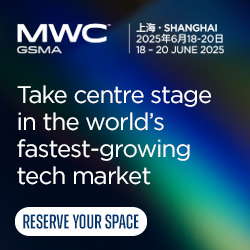At the post MWC22 sharing session recently organized by the GSMA, Xie Junshi, EVP and COO of ZTE, explored several exciting new trends in scenario-based 5G applications, mobile technologies, and industry development in an increasingly digitalized world.
Xie noted that digitalization in the volatile, uncertain, complex and ambiguous (VUCA) era is continuously strengthening the “immune system” of our society, playing an irreplaceable role in tackling not only the current pandemic but also long-term public health issues such as ageing populations while promoting sustainable development. With digitalization
accelerating around the world, both the technology and market are changing disruptively, creating more innovations and greater potential. To maintain a competitive edge, CSPs are pursuing the transformation to DSPs. Focusing on scenarios and value creation, ZTE aims to work jointly with all partners to build a digital and intelligent ecosystem.
Below are the highlights of Xie’s sharing:
Accelerating global digitalization is boosting the society’s immune system
Digitalization is the key to greater societal resilience in the post-pandemic era. Whether in telecommuting, online collaboration, or digital factories, digitalization provides support for our lives and helps guarantee the health of the entire economy. Digitalization is also playing a pivotal role in tackling VUCA and population aging while promoting green, low-carbon, and sustainable development.
Driven by scenario and value, both the market and technology are changing disruptively. The diverse range of exhibitors and fascinating content at MWC 2022 highlight the evolution from mobile Internet to IoE and AIoE, marked by ubiquitous 5G connectivity, AI advancement, cloud-network convergence, and new technologies. Today, without a doubt, global digitalization is accelerating, creating more technological innovations and greater market potential. To maintain a competitive edge, CSPs are pursuing the transformation to DSPs.
In every industrial revolution, higher efficiency has always been the most critical factor. This current revolution of digitalization is no exception. At MWC 2022, most of the digital innovations presented by exhibitors, including ZTE, focus on higher efficiency. For instance, ZTE shared innovations for simplified infrastructure, efficient and intelligent operations, as well as agile innovations for achieving growth in the second curve of digital services. ZTE has also adopted scenario-based approaches to realize the ultimate experience and efficiency, promoting sustainable development and future technological advancements.
Sustainable development is the key goal of enterprises, while the key to promoting 5G application in the to-B field lies in three aspects
For 5G networks, consumers look forward to a better experience, while enterprises look for lower costs, higher efficiency, and business growth. So far, in the to-B field, 5G technology has been widely applied to verticals. For example, to assist or replace manpower, 5G-powered automated guided vehicles (AGVs) are used in flexible production lines, 8K machine vision for more efficient quality inspection, and unmanned or remotely controlled machines to assist in operations.
To facilitate greater breakthroughs in the to-B field, however, it is important to achieve collaboration with operators and enterprises where every party stands to benefit. Together, there are three aspects to work on: creating and sustaining competitive differentiation, developing effective business models to speed up value creation, and exploring the path to mass customization.
Competitive differentiation means that ZTE can provide unique and optimal solutions, and hence stand out from the competition. When delivering 5G solutions for verticals, it is important to determine whether 5G technology is indispensable, or whether the 5G-powered solutions have unparalleled advantages over others. This is how competitive differentiation can be sustained.
As for speeding up value creation in the early stage of 5G application, it is important to focus on customers' pain points and distinctive needs in fragmented scenarios. On this basis, ZTE can explore more scenarios in different fields, so as to accelerate the development of 5G application in the to-B field.
To achieve higher profitability, mass customization is the optimal choice. This is why ZTE aims to build underlying capabilities of digital infrastructure and component-based cloud capabilities. Through flexible orchestration of such capabilities, agile innovation can be implemented, meeting the requirements of different applications in various scenarios. In addition, this allows ZTE to continue to build successful experience across different scenarios and consolidate a strong digital foundation, to enable rapid iteration and continuous evolution.
Evolving consumer expectations drive 5G application in the to-C field, and joint efforts are required for building the infrastructure and ecosystem
The rapid development of the mobile Internet is driven by evolving consumer expectations and improving human capabilities. The same will be true for the application of 5G in the to-C field. For example, consumer demands boost the development of applications that can provide real-time, immersive, and interactive audio-visual experience, such as UHD videos, AR and VR applications, and cloud gaming. This has been a trend in countries with wide 5G network coverage, including China and South Korea. With 5G technology, we can now watch live sport events with a panoramic view, freely zoom in or out, and switch between different camera positions. In this way, consumers can stay at home and enjoy personalized and immersive experiences in real time. In order to make the much talked-about metaverse a reality, we need to enhance network capabilities, computing power, and storage capabilities, for which 5G technology plays a vital role.
To promote 5G applications in the to-C field, wide and deep network coverage is of great importance. More specifically, we need optimal, cost-effective 5G solutions that can guarantee continuous and intensive network coverage both outdoors and indoors, even on high-speed trains, airplanes, and ships. ZTE has already made many innovations in the to-C fields. In addition, easy-to-use and cost-effective terminals, together with different kinds of content services, will help give rise to improved applications in a stronger and healthier ecosystem.
ZTE is committed to building a "1+2+3" digital ecosystem.
The next major chapter of 5G development will start with the arrival of 5G-Advanced. While 3GPP Releases 15, 16, and 17 represent the first phase of 5G standards, 5G-Advanced marks the start of the second. Following up on 5G commercial deployment and empowerment of verticals worldwide, 5G-Advanced focuses on better user experience and more industry applications.
In December 2021, together with its industry partners, 3GPP approved a work package for its Release 18, marking the start of 5G-Advanced evolution. The work package includes 28 study or work items in a variety of scenarios, including eMBB, real-time interactive new media, network intelligence, IoT featuring high-precision positioning and low power consumption, IIoT, integrated sensing and communication (ISAC), fused location, and satellite-cellular network integration. These efforts will bring us brand new capabilities, applications, and experiences. Toward 5G-Advanced, ZTE will continuously work with industry partners to promote technological innovation and industrial transformation.
To gain a firm foothold in this process of network evolution, ZTE is always committed to building a "1+2+3" digital ecosystem, looking to address key pain points and create greater value for customers.
So what exactly is ''1+2+3''?
"1" refers to a solid foundation consisting of chipsets, algorithms, and architectures. ZTE continuously strengthens its foundation to gain momentum for growth.
"2" refers to intelligence and security, which are crucial to 5G networks and business.
"3" refers to capability, performance, and efficiency, which should be continuously improved through innovations and are key to the prosperity of 5G.
With the evolution to 5G-Advanced, ZTE will work with industry partners and advance technological innovations to reinvent a digital world.
China's 5G development will make greater contributions to global industries and markets.
As of January 2022, a total of 1.425 million 5G base stations have been built in China, making 5G networks available in over 98% of counties and 80% of towns. Mobile 5G connections now exceed 518 million. More crucially, over 10,000 innovative 5G use cases have been created, which span the fields of manufacturing, health care, education and transportation.
In the 5G era, China has been an active contributor in many aspects:
- The moderately advanced pace of network construction in China has boosted the growth of the 5G industry.
- China has continued exploring and promoting large-scale 5G application, consolidating the foundation of the entire industry.
- China actively pushes forward the co-building and sharing of networks for higher resource efficiency.
China has a wide range of wireless scenarios and a sound foundation provided by its digital economy, and is witnessing the growth of huge potential in consumer markets and various industries. With the moderately advanced pace of 5G network construction, excellent network coverage and guaranteed performance, China’s unique environment is set to produce a range of more applications and continuous innovation, and contribute to global industries and markets.
Video link to Xie’s sharing at MWC22 :






